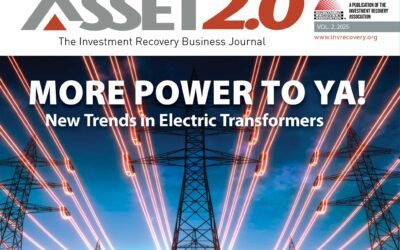The Role of Artificial Intelligence in Optimizing Asset Recycling Disposition
As technology rapidly evolves, the fusion of artificial intelligence (AI) with asset recycling and disposition is creating new avenues for businesses to optimize operations and support environmental sustainability. Below, we explore how AI is reshaping the way organizations value, recycle, and repurpose assets, and discuss the opportunities and challenges that lie ahead.
AI-Powered Asset Valuation
Accurately determining an asset’s worth is often one of the biggest hurdles in asset recycling and disposition. AI is transforming this process by:
- Machine Learning Algorithms
Analyzing massive datasets from various sources to produce more precise, real-time valuations. - Predictive Analytics
Forecasting future asset values, enabling companies to decide the best timing for recycling or disposal. - Image Recognition
Assessing an asset’s condition from images, which speeds up valuation for larger inventories.
Optimizing the Recycling Process
AI’s influence extends beyond valuation into the recycling process itself:
- Sorting Automation
Robots powered by AI can accurately sort and separate recyclable materials, boosting the recovery rate. - Quality Control
Machine learning models detect contaminants or non-recyclable objects in real-time, leading to higher-quality recycled outputs. - Process Optimization
AI-driven analytics continually refine recycling workflows to reduce energy usage and costs, increasing overall efficiency.
Enhancing Data Security
Data security is a prime concern when disposing of IT assets. AI helps safeguard sensitive information by:
- Intelligent Data Wiping
Advanced AI algorithms thoroughly erase data from devices, minimizing the risk of breaches. - Anomaly Detection
AI flags unusual activity that could indicate potential data theft or system intrusions during disposition.
Improving Supply Chain Management
AI is transforming supply chains and the entire asset lifecycle in several ways:
- Predictive Maintenance
Anticipating when assets need replacing, so companies can better plan recycling and disposal without downtime. - Inventory Optimization
Balancing stock levels with demand and usage patterns, preventing waste and boosting operational efficiency. - Circular Economy Facilitation
Identifying opportunities for reuse or repurposing, both within the same organization and across industries.
Environmental Impact Assessment
Minimizing environmental harm is a major goal of asset recycling programs, and AI offers powerful tools to achieve this:
- Carbon Footprint Calculation
Machine learning can accurately estimate emissions from different disposal methods, guiding environmentally-friendly choices. - Lifecycle Analysis
AI-driven evaluations pinpoint sustainability improvements from an asset’s production to its end-of-life stage.
Challenges and Considerations
While AI unlocks new possibilities, it also brings potential obstacles:
- Data Privacy
Large-scale data processing must comply with regulations like GDPR, requiring rigorous security measures. - Initial Investment
Setting up AI-based systems can be expensive initially, although many businesses find long-term returns worth the cost. - Skill Gap
A shortage of professionals with both AI and asset management expertise highlights the need for specialized training and hiring.
The Future of AI in Asset Recycling and Disposition
Looking ahead, several emerging trends indicate AI’s ever-growing role in this space:
- Blockchain Integration
Pairing AI with blockchain could deliver unprecedented transparency and traceability in the disposition process. - Autonomous Disposition Systems
Fully automated asset recycling and disposal workflows may soon reduce the need for human oversight. - Cross-Industry Collaboration
By seamlessly sharing data, AI can spur innovative ways to reuse assets across different sectors.
Conclusion
Merging AI with asset recycling and disposition brings significant benefits to both businesses and the environment. Companies that embrace these technologies are likely to see gains in efficiency, accuracy, and sustainability, positioning themselves ahead of the competition. As AI continues to evolve, it promises an even more intelligent, automated, and eco-friendly future for asset recycling and disposition.
By staying informed of AI developments and implementing relevant solutions, organizations can strengthen their asset management strategies and contribute to a more sustainable, circular economy.



